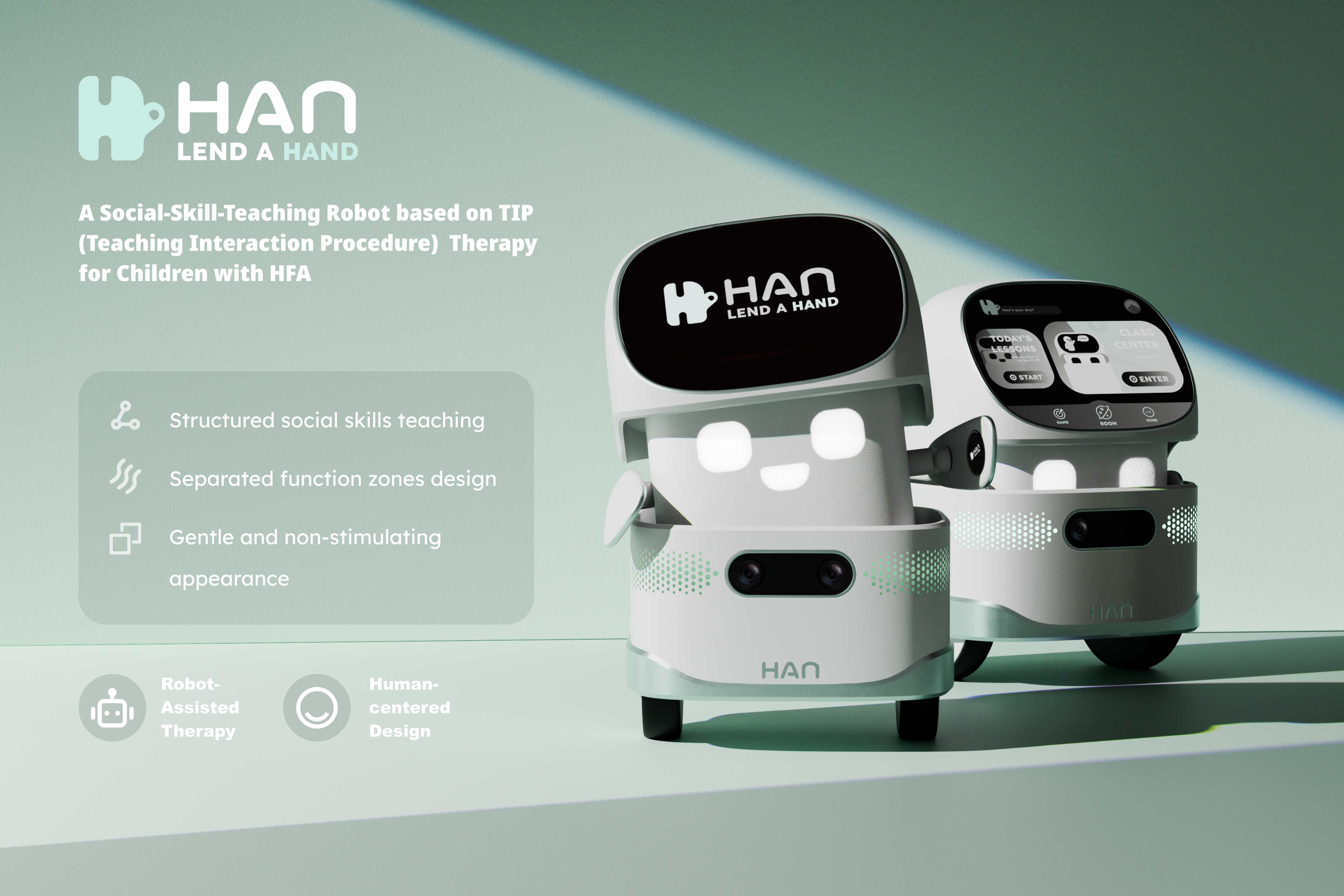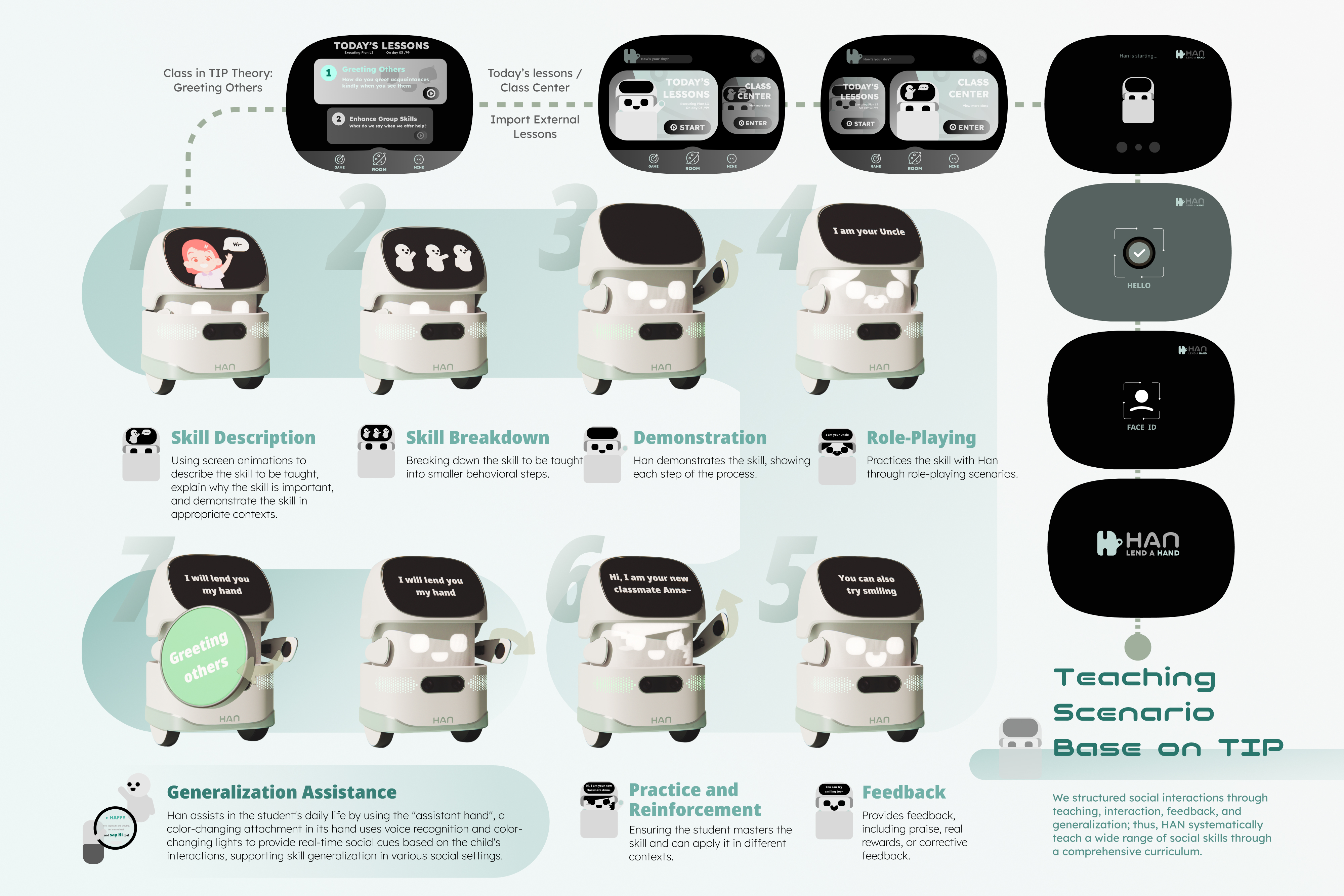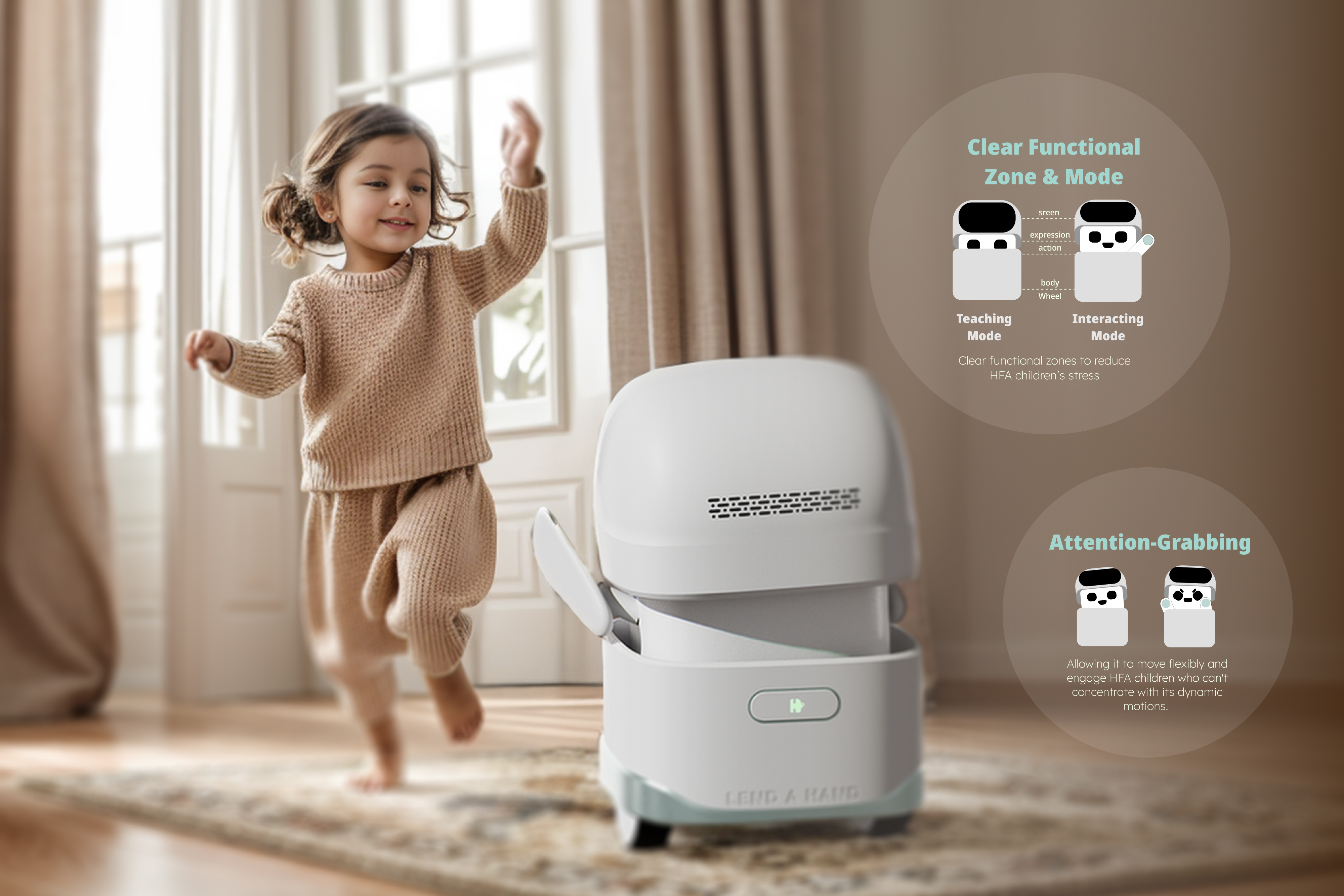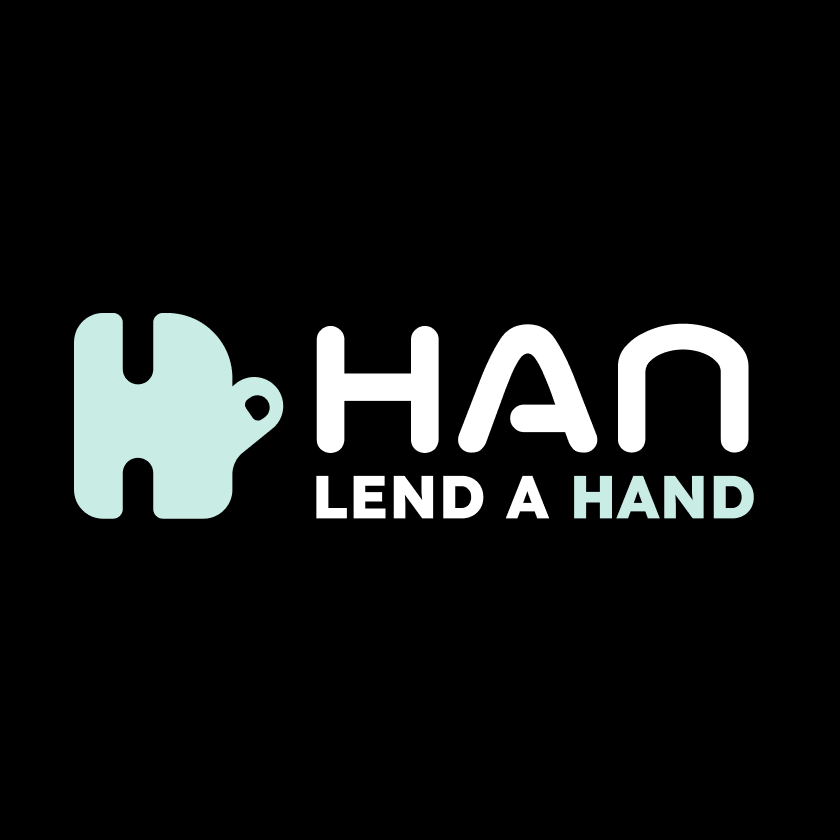
Designers
Sinuo Jing, Bozhen Zhu
Year
2025
Category
New Talent
Country
China
School
HIT (Harbin Institute of Technology)
Teacher
Zaiqiao Ye
»HAN tackles the shortage of autism therapists for high-functioning children through thoughtful design research and a blend of physical and digital elements. The jury praises the functional prototype, which includes motion, facial expression, and gesture recognition, showing exceptional quality for student work. Although its role as a complementary therapy tool needs clarification, the professional execution and innovative physical-digital convergence make it stand out. High-quality video storytelling enhances its impact, showcasing a deep understanding of the core challenge.«
UX Design Awards Jury 2025 Spring
And the award goes to...
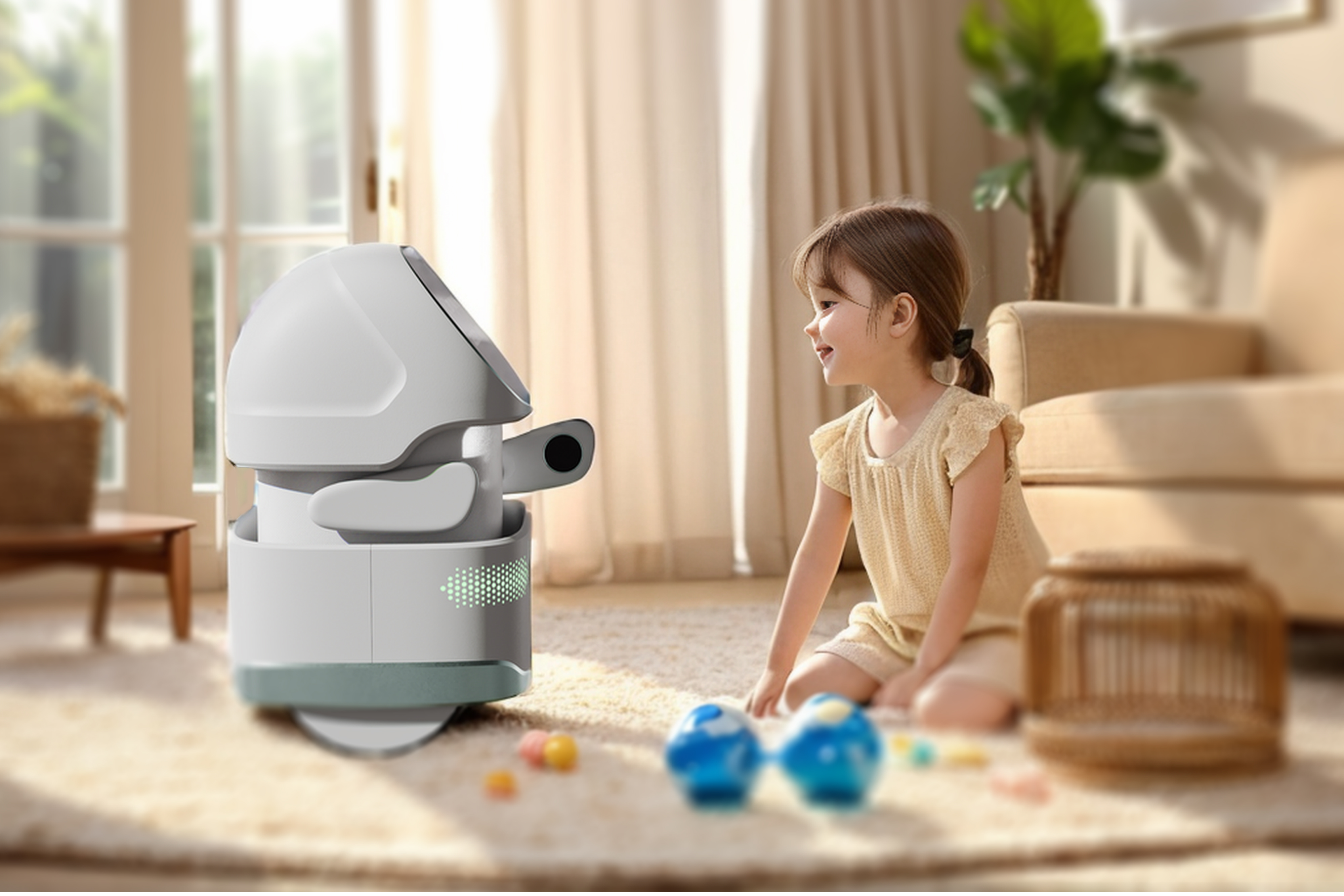
Three questions to the project team
What was the particular challenge of the project from a UX point of view?
The main challenge of HAN is to develop a teaching method that provides comprehensive, structured social skills training, overcoming the fragmented approaches of existing robots like NAO and JIBO, which focus on individual skills through imitation and expression). After exploring various methods (like SS, SSG, and VM), we chose the TIP (Teaching Interaction Procedure) method, which teaches social behaviors through multiple scenarios. Another challenge was designing the robot to make sure its interactions and appearance are customized for children with autism. This includes making sure the robot aligns with their preferences, such as avoiding real human contact, using soft colors, and adhering to predictable routines. The aim is to make HAN a robot that children with autism enjoy interacting with, without feeling uncomfortable or resistant.
What was your personal highlight in the development process? Was there an aha!-moment, was there a low point?
A key highlight in our development was discovering the effectiveness of a dual-screen interaction system. Initially, we struggled to improve the robot's teaching effectiveness through changes in its appearance or materials. Through research and feedback, we realized that using two screens for interaction helped address the issues faced by many existing robots, which rely on a single screen and often overwhelm users with a large amount of information—switching between facial expressions, videos, and other content. The dual-screen setup allowed us to organize the information in a more structured, engaging and predictable way, enhancing the robot’s ability to deliver educational content in a way that was both effective and enjoyable for children with autism
Where do you see yourself and the project in the next five years?
In the next five years, I hope HAN will evolve into a widely used tool in autism therapy, reaching a broader user base and influencing children's social development worldwide. Our goal is to further enhance the robot's functionality and expand its application scenarios, leveraging the research resources platform at HIT and continuing collaboration with autism organizations in Shenzhen, who helped us during the research phase. I envision HAN becoming an essential part of personalized education, ultimately improving the lives of many children and their families.
